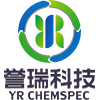
Hyaluronic acid and sodium hyaluronate are two famous ingredients that are gaining a lot of attention in the skin care and beauty world. Known for their excellent moisturizing properties, they have become a popular choice in many skin care products, including creams, serums, and masks. But what if I told you that there is a significant link between these two ingredients and ACHA? Let’s delve deeper into the science behind the connection between hyaluronic acid, sodium hyaluronate, and ACHA.
Hyaluronic acid (HA) is a substance found naturally in our bodies, particularly in our skin, connective tissue and eyes. HA is known for its exceptional moisturizing abilities, acting like a sponge, binding and retaining water molecules. However, due to aging, environmental factors, and other lifestyle choices, our hyaluronic acid levels tend to decrease, leading to dryness, fine lines, and wrinkles. This is where sodium hyaluronate comes into play.
Sodium hyaluronate is the salt form of hyaluronic acid, with smaller molecules that are easily absorbed by the skin. When applied topically, it penetrates the epidermis, effectively moisturizing and nourishing the deeper layers of the skin. The ACHA connection lies in the moisturizing properties of sodium hyaluronate, as it helps relieve symptoms of atopic dermatitis (AD), a chronic skin disease characterized by dryness, itching, and inflammation.
ACHA (Atopic Dermatitis and Chronic Health Conditions Alliance) is an organization dedicated to raising awareness about AD and other chronic health conditions. Because sodium hyaluronate deeply moisturizes the skin, it has proven to be a valuable ingredient in treating AD symptoms. It relieves pain by replenishing moisture lost by the skin, reducing itching and promoting overall skin health.
The efficacy of sodium hyaluronate in the treatment of AD has been further supported by scientific research. Researchers found that sodium hyaluronate can not only improve clinical symptoms such as itching, erythema, and dryness, but also improve the quality of life of AD patients. This discovery sparked interest among skin care professionals, leading to the formulation of specialized products containing sodium hyaluronate designed to reduce AD symptoms.
In short, the role of hyaluronic acid and sodium hyaluronate cannot be underestimated in skin care and treatment of chronic skin diseases such as atopic dermatitis. With their incredible moisturizing abilities, these ingredients have become allies in promoting skin health and fighting AD symptoms. Thanks to the tireless efforts of organizations like ACHA, AD patients can find relief and improve their quality of life through innovative solutions provided by sodium hyaluronate. So the next time you come across a product containing these powerful ingredients, remember the ACHA connection and the significant benefits they provide in skin care and overall health.
Post time: Nov-15-2023

